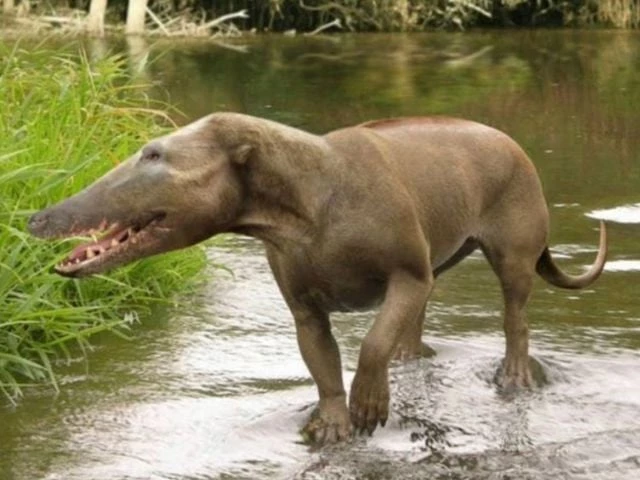
Whales, the ocean's largest creatures, were once land-dwelling animals that walked on four legs. Around 50 million years ago, their ancestors roamed the shores, evolving into the marine giants we know today.
One of the first cetaceans, Pakicetus, was a goat-sized creature that lived along the banks of lakes and rivers in present-day Pakistan.

Although it looked nothing like a whale, Pakicetus displayed remarkable adaptations for life in the water, including the ability to hear underwater.
Pakicetus' descendants continued to adapt, leading to the evolution of Ambulocetus, which lived between 50 and 48 million years ago.
Ambulocetus was well-suited for life both on land and in the water. Its large feet were more flipper-like than the longer legs of Pakicetus, and it used its tail for swimming.
As time passed, the species evolved further, and by 40 to 33 million years ago, the fully aquatic Dorudon emerged. Dorudon was a five-metre-long creature with flippers and tiny hind legs, which lived entirely in the water and even gave birth underwater.
In just 10 million years, cetaceans had completely adapted to aquatic life, marking an extraordinary evolutionary transition. One group of these evolving creatures, known as baleen whales, developed flatter skulls and filtering systems in their mouths, such as those seen in blue whales and humpback whales.
Meanwhile, other whales, including dolphins, orcas, and sperm whales, retained their teeth.
This fascinating journey from land to sea showcases one of the most rapid evolutionary transitions in history.








1723619005-0/BeFunky-collage]____-(85)1723619005-0-270x192.webp)















COMMENTS (5)
Comments are moderated and generally will be posted if they are on-topic and not abusive.
For more information, please see our Comments FAQ